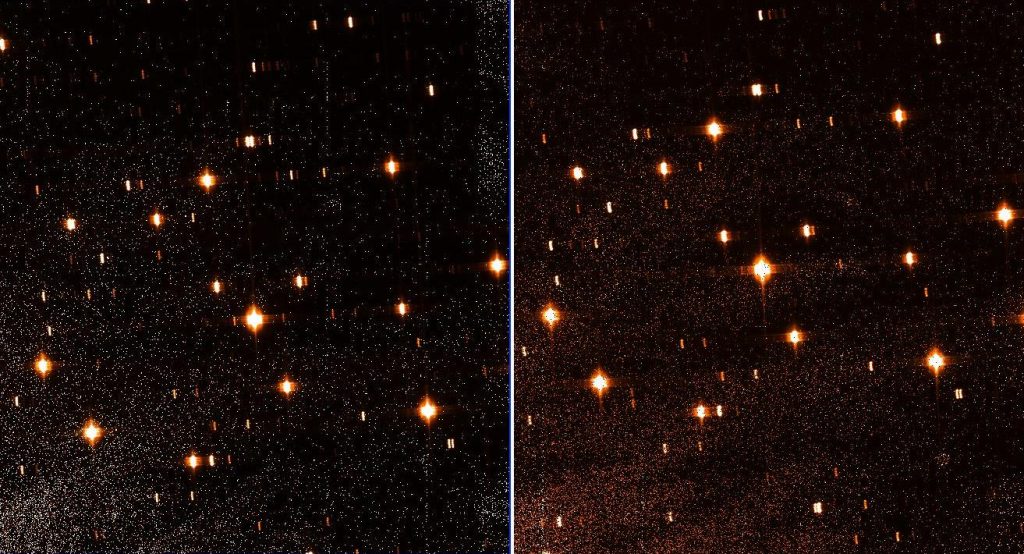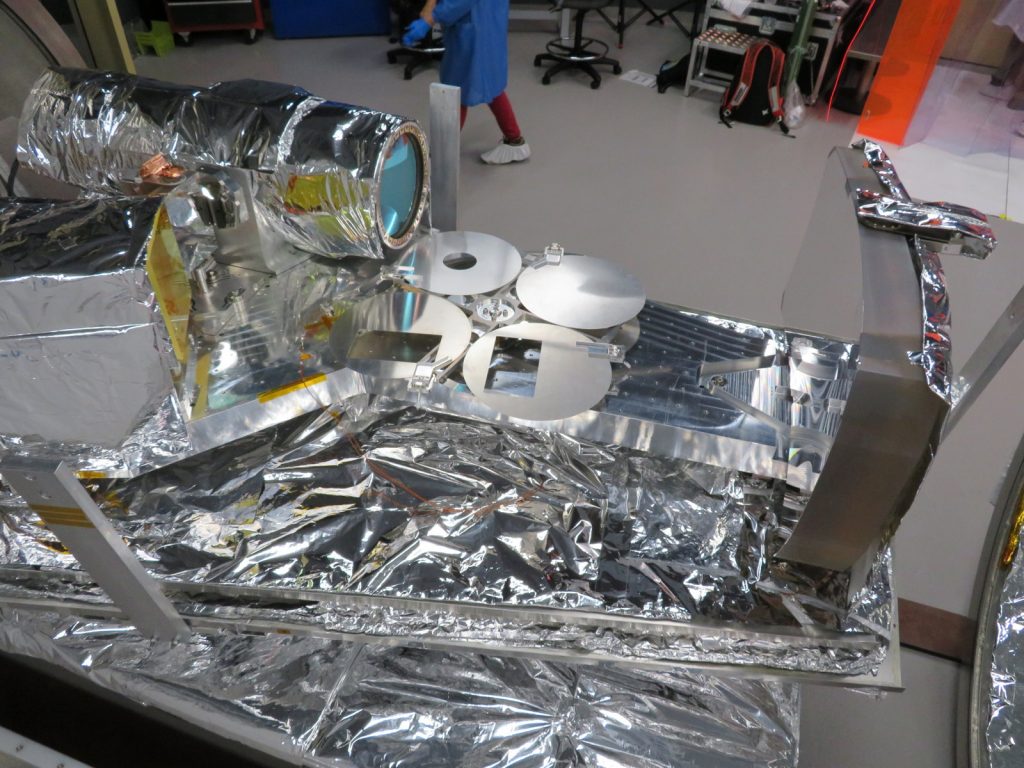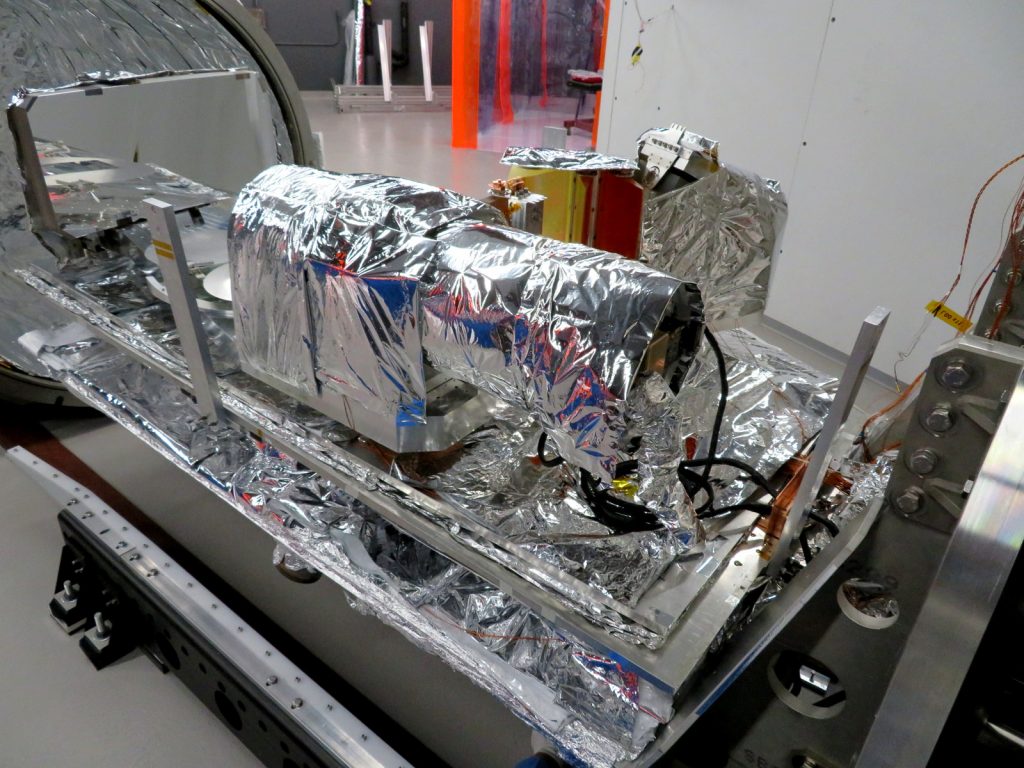2018 March: SPIRou completes first cryo-cycle at CFHT
SPIRou just completed its first on-site cryogenic cycle
Following the cryostat closure and the beginning of the first cryo-cycle on February 16-20, most of the spectrograph components reached 75K in about a week, then another 1.5 week was necessary for the whole spectrograph, including its massive parabola and camera, to reach thermal equilibrium and obtain a stable focus. For this first cryogenic cycle, the engineering-grade H2RG detector was used, in order to easily compare with results obtained in the previous cycle during the acceptance tests at IRAP / OMP in Q4 2017.

Hollow-cathode frames taken indicate that the spectrograph focus is nearly back to its optimal position. Frames collected with a Hartmann mask hiding part of the beam entering the camera indicated that the defocus amounts to 80 µm compared to its best position in Toulouse, with a spectral resolving power ~10% lower than nominal. Although not perfect, this is quite remarkable given that the whole instrument was dismantled, shipped to the other side of the planet then reassembled from scratch at CFHT atop Maunakea between these two steps.
Thermal performances were also improved during this thermal cycle, with new heaters installed so that the cold heads cryo-cooling the whole optical bench and components can be regulated to a few mK. This should result in an enhanced thermal stability and therefore better RV precision of the SPIRou spectrograph.
Tests are now over for this first cooling cycle. Following the warm-up phase, SPIRou will be ready to welcome its new science-grade H4RG detector, with which exciting explorations of nearby planetary systems and newborn stars will be soon carried out.




